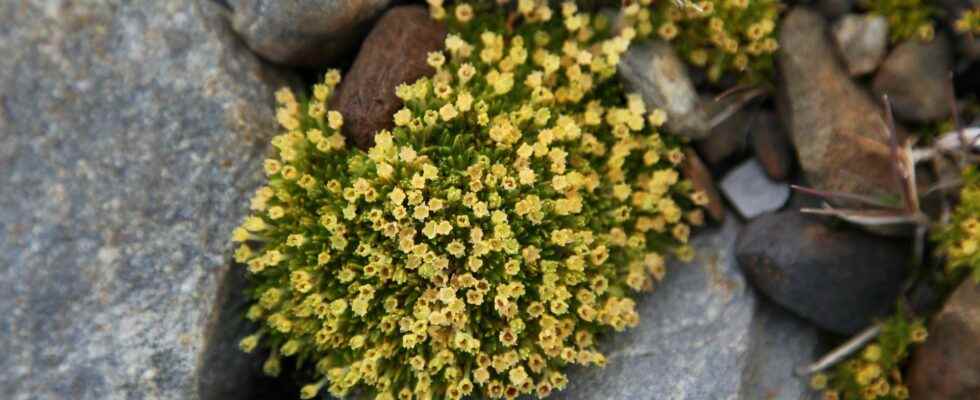You will also be interested
[EN VIDÉO] Antarctica: a gigantic sheet of ice breaks off This video, made from radar images acquired by the TerraSAR-X satellite, shows the evolution of the formation of one of the largest known icebergs. Over the weeks and months, the satellite follows its evolution, from the appearance of the fault in the Larsen C ice shelf until its fragmentation.
The land austral, and more specifically the antarctic region, are characterized by harsh environmental conditions, not conducive to the development of vegetation. However, like the rest of the globe, this region is currently experiencing a major climate change. The area Antarctic would thus have recorded a significant increase of +0.156°C per decade between 1960 and 2010. Similarly, summer precipitation would have experienced a sharp increase over the same period.
A phenomenal expansion of certain plant species
In connection with these major climatic changes, researchers have observed an increasing expansion of deschampsia antarctica (Antarctic rod) and Colobanthus quitensis (Antarctic pearlwort), two typical plants of the region. On the small subantarctic island of Signy, the number of sites colonized by D. antarctica doubled between 1960 and 2009, then again between 2009 and 2018. The population expansion rate of C. quitensis even increased by 154% over the period 2009-2018. This dynamic does not seem to have been impacted by the occasional colder episodes, such as that of summer 2012.
Two main factors appear to be behind this accelerated expansion for D. antarctica and C. quitensis : increasing the temperature of theair, but also a decline in the fur seal population. These animals have a tendency to trample the plants, thus limiting their development. The reduction in their populations therefore appears to be beneficial for the plants of the southern lands.
This study confirms the reactivity of certain Antarctic plants to global warming and shows that the Antarctic region is not as resilient as previously thought. climate change. These observations, summarized in an article published in the journal Current Biologysuggest that continued global warming will lead to further expansion of these two species plants, with probably an increase in the production of seeds and the quality of pollen. One of the factors limiting this expansion could however be a lack of water, associated with an excessive warming of the air temperature.
A development that is not very pleasing
These results correlate with similar observations made in the northern hemisphere and in particular in European mountain ranges. The authors conclude that if global warming underway follows the worst-case scenario envisaged by the scientific community, the weather of the Earth could be, by 2030, similar to that of the Pliocene, known to be one of the warmest periods in the history of the Earth. While this environmental change bodes well for D. antarctica and C. quitensis, the greening of Antarctica is not good news for the region as a whole. Indeed, such warming is also associated with an increased risk of invasion by non-native species, endangering the fragile ecosystems of this territory and leading to an irreversible change in the biodiversity.
Many factors must still be taken into account to estimate the evolution of Antarctic vegetation and imagine what Antarctica will look like in a few decades: plant expansionseasonal precipitation, melting ice… It is clear, however, that the current expansion of vegetation in this region is not good news for this finely balanced environment, which now appears to be seriously threatened.
Interested in what you just read?
